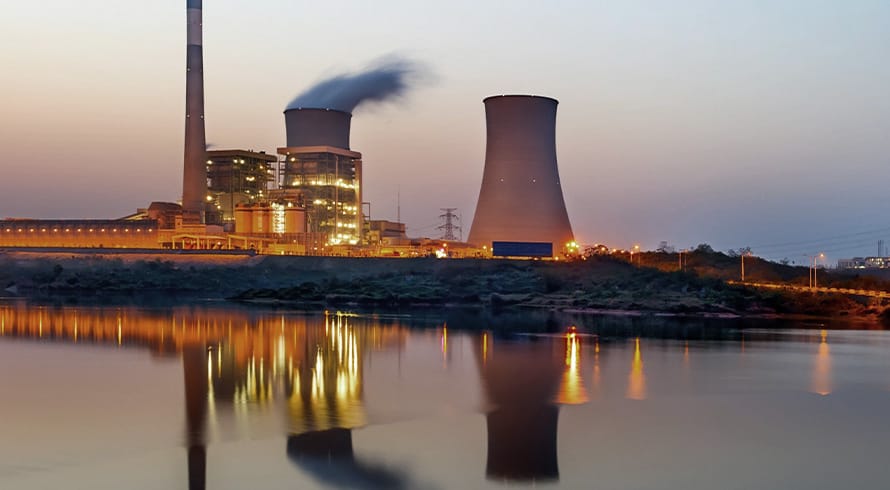Why your energy project should consider the imminent carbon tax emissions market
South Africa’s committed contributions to reduce carbon emissions and to meet its emission targets are set out in the Paris Agreement on Climate Change (2015), which comes into effect in 2020. At a country level the South African government has proposed the introduction of a carbon tax, coupled with carbon offsets, to meet these emission reduction targets.
Carbon Credits
The Kyoto Protocol provides three market-based mechanisms intended to minimise carbon emissions. One of these is the clean development mechanism (CDM). It allows industrialised countries with emission reduction targets to undertake GHG reduction projects in developing countries, and to generate Certified Emission Reductions (CERs). Often referred to as carbon credits, CERs can be traded on international markets and thereby used by industrialised countries to meet their respective targets under the Convention.
The procedure for issuing CERs was determined at the 7th Conference of the Parties to the Convention held at Marrakesh in 2001 (the so-called “Marrakesh Accord”). This established the CDM Executive Board and the rules for CDM. The Marrakesh Accord stipulates a procedure by which the CDM Executive Board ultimately approves (or rejects) a project and issues CERs.
It is a requirement that participating countries must identify a designated national authority (DNA), which must consider applications for CDM projects and certify that they comply with national laws and the international law requirements as part of the process for issuing CERs. South Africa has designated its DNA in regulations made under the National Environmental Management Act, No 107 of 1998 (DNA Regulations). The appointed DNA is the Director-General of the Department of Energy (DoE).
The DNA Regulations grant the DNA powers and impose on it various obligations. These include that the DNA is required to:
- establish a process for CDM project approval;
- consider project proponents’ applications and endorse that the project complies with international and national criteria for CDM projects; and
- issue letters of approval to project proponents in respect of CDM projects that meet the international and national substantial development criteria.
Carbon Tax
Carbon tax is not a new concept in the South African energy industry, with the first explicit carbon tax introduced as far back as 2008 by way of an environmental levy on electricity generation from non-renewable sources above 5MW. This levy
is still currently in place.
In 2015 Parliament tabled a draft carbon tax bill (2015 Bill), seeking to price carbon emissions in the form of a tax. The 2015 Bill was the predecessor of the current draft Carbon Tax Bill which was published in December 2017 (Carbon Tax Bill), and was open for public comment until 9 March 2018. In the 2018 budget, the then Minister of Finance, Malusi Gigaba announced that the Carbon Tax Bill would be implemented from 1 January 2019.
The Carbon Tax Bill aims to enable South Africa to meet its required contribution commitments as per the 2015 Paris Agreement on Climate Change, rewarding the efficient use of energy and reduction of greenhouse emissions. The Carbon Tax Bill is structured around the “polluter pays” principle to incentivise firms and consumers to proactively consider the cost of carbon emissions in their production, consumption and investment decisions.
The Carbon Tax Bill provides that carbon tax will be levied on a person that conducts an activity as published by the Minister of Environmental Affairs under the National Environmental Management: Air Quality Act, No 39 of 2004. Electricity production (combustion of fossil fuels, excluding the use of back-up generators) is currently listed as such an activity. The taxpayer of such carbon tax will therefore be the energy producer.
The Carbon Tax Bill proposes that the rate of carbon tax will be R120 per tonne of carbon dioxide. This will be subject to the applicable tax-free allowances as stipulated in s7 to s13 of the Carbon Tax Bill, which are limited to a maximum total allowance per listed activity. For example, in the case of the main activity being electricity and heat production, such as in the case of a coal power generation plant, these tax-free allowances include:
- a 60% allowance for fossil fuel combustion;
- a 5% carbon budget allowance; and
- a 10% carbon offsets allowance (which is discussed in greater detail under Carbon Offsets below).
The maximum total tax-free allowance for electricity and heat production is 75%. This would mean that if the coal power plant in the above example utilise all available allowances, it will pay carbon tax on 25% of carbon dioxide produced.
A taxpayer’s carbon tax liability is calculated by reducing the tax base by the allowances provided for above, and then multiplying that amount by the rate of carbon tax. A simplified version of the formula is as follows:
X = (E – D – S) x (1 – C) x R
Where:
X = the amount of carbon tax;
(E – D – S) = greenhouse gas emissions as calculated per the provisions of the Carbon Tax Bill;
C = percentage allowances determined in s7 to s13 of the Carbon Tax Bill; and
R = rate of carbon tax.
According to the National Treasury and the South African Revenue Service, as set out in the Draft Carbon Tax Bill 2017: Response Document, the existing environmental levy for electricity generation is currently fulfilling dual objectives of promoting energy efficiency and indirectly pricing GHG emissions. The document states that to effectively price GHG emissions and to ensure that no double taxation occurs, a credit or reduction of the environmental levy for electricity generation is proposed to be implemented upon the introduction of the carbon tax.
Carbon Offsets
Draft Carbon Offsets Regulations (Regulations) was published on 20 June 2016 but apply to the 2015 Carbon Tax Bill. Updated regulations have not been published pursuant to the Carbon Tax Bill.
The Regulations aim to provide an offset mechanism where a carbon offset may be claimed to enable a reduction of carbon tax liability. An offset will be allowed to a taxpayer for CERs from the furtherance of an approved project. Approved projects include projects certified under the CDM, Verified Carbon Standard or Gold Standard verification mechanisms, or a project that complies with another standard approved by the Minister of Energy. The approved project must be a project that is wholly undertaken in South Africa, and in respect of an activity that is not subject to carbon tax.
An allowance for an offset that is carried on, on or after 1 January 2017 can only be utilised for a certain duration of time after the offset is generated, depending on the type of approved project. The Regulations define an offset as “a measurable avoidance, reduction or sequestration of carbon dioxide equivalent (CO2e) emissions in respect of an approved project”. For instance, a CDM project’s offsets may only be utilised for seven years, which period may be extended with two periods of seven years, or for 10 years (which period may not be extended).
The Regulations therefore allow a party to accumulate offsets from an activity that is not subject to carbon tax, which can then be used to reduce carbon tax liability for an activity which is subject to carbon tax. For example, carbon offsets earned under a renewable energy generation project can be used to reduce the carbon tax liability of a coal power generation plant, limited to the 10% carbon offset allowance set out in the Carbon Tax Bill.
Examples of activities that will accumulate carbon offsets include energy efficiency in the residential and commercial sector, energy efficiency in buildings, community-based and municipal energy efficiency and renewable energy, fuel-switching projects, and electricity transmission and distribution efficiency.
The explanatory note to the Regulations provides that it will have to be assessed whether carbon offsets will be traded via over-the-counter or auctioning methods, or even whether a South African trading platform will be established.
The Regulations, however, limit the projects that can accumulate offsets and specifically exclude projects that benefit from other government incentives, as this could lead to double counting of emission reduction benefits. Projects benefitting from the Energy Efficiency Savings Tax Incentive as well as projects with power purchase agreements under the Electricity Regulations on New Generation Capacity (New Gen Regs) -such as independent power producers under the Renewable Energy IPP Procurement Programmes (IPPs) - can therefore not accumulate carbon offsets that can be used to reduce carbon tax liability. Carbon offsets can, however, be claimed by other renewable energy generators that do not have power purchase agreements pursuant to the New Gen Regs.
Conclusion
What is evident from the above is that the intricate legal framework surrounding carbon emissions in South Africa will present a myriad of opportunities to contribute to emission reduction targets and create a market for carbon emissions. Electricity generators should therefore ensure that that they adequately position themselves so as to derive the maximum benefit from the proposed legislative interventions. Importantly, carbon tax risk should also be taken into account in the development of a power project attracting such tax.
The information and material published on this website is provided for general purposes only and does not constitute legal advice. We make every effort to ensure that the content is updated regularly and to offer the most current and accurate information. Please consult one of our lawyers on any specific legal problem or matter. We accept no responsibility for any loss or damage, whether direct or consequential, which may arise from reliance on the information contained in these pages. Please refer to our full terms and conditions. Copyright © 2025 Cliffe Dekker Hofmeyr. All rights reserved. For permission to reproduce an article or publication, please contact us cliffedekkerhofmeyr@cdhlegal.com.
Subscribe
We support our clients’ strategic and operational needs by offering innovative, integrated and high quality thought leadership. To stay up to date on the latest legal developments that may potentially impact your business, subscribe to our alerts, seminar and webinar invitations.
Subscribe




